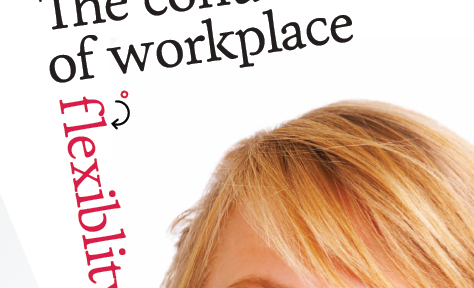A flexibility revolution is happening in Australian organisations, with flexible work being identified as the number one area of priority for sustainable workforce strategy[1]. At Symmetra, we have certainly noticed an increasing appetite for flexibility initiatives that create real change.
Despite this popularity surge, some high profile organisations locally and globally have been pulling back on their culture of flexibility, giving people the impression that those who bravely embraced this culture have come to realise it was nothing more than a failed experiment.
Reverting back to the past where people were required to be physically present during set times, going back to the ‘good old days’, right at a time in our history where the very nature and concept of work is evolving at exponential speed, seems odd.
Creating flexible work cultures is now seen as a strategic imperative to ensure that organisations remain competitive.
This business case is driven by many factors, such as rapid technology advancement and changing business models. We are seeing a movement towards a globalised economy where our customers and colleagues could be anywhere in the world. Working across multiple time zones means that we are slowly saying goodbye to ‘business hours’.
Technology is opening up new ways of interacting with our customers and also shifting their expectations in a digital economy. There is a growing acceptance that organisations need to adapt to the rapid evolution of business and society – having an agile, adaptive and productive workforce is seen as an imperative that no organisation can afford to overlook.
Trying out flexibility at work and not achieving the anticipated success does not mean we should dismiss it – it simply signifies that this change is not easy. Instead of going backwards we need to learn from past trials (and failures!) to get better at it.
The benefits of working face to face cannot be dismissed. The social aspects of work, the ability to spontaneously collaborate and communicate with ease are worth valuing. To ensure that the benefits of flexibility are achieved, while the benefits of face time are not lost, a much more strategic and systemic approach to change needs to be adopted.
In our work, we see that for every negative case, there are many more organisations that are quietly thriving as a result of moving towards this modern workplace culture. It is when times get hard and organisations need to ask employees to dig deep, flexibility can help make this possible.
Working in a flexible way that breaks down the traditional meaning of what ‘work’ is and how it is done is a hallmark of new businesses that are rising and taking over markets that were previously considered safe houses. Just think of how online retail purchasing has impacted bricks and mortar stores in such a short amount of time – the on demand, 24/7 way of meeting customer needs has become a growing feature of the new age of work[2]. Without flexibility, these customer expectations could not be met and it is only a matter of time before they will be met by a competitor.
Flexible work culture is the modern evolution of the workplace and if businesses want to remain competitive into the future, they need to ensure they are equipped to deal with it.
If we see flexibility as long term, permanent cultural change and not a ‘phase’ that people will soon get over, it becomes clear that solutions to drive this change need a long term, strategic approach synchronised with business strategy. This is not a feel good topic for a leadership forum, or something that will shift as a result of a single workshop. Those who want to see a real change recognise the need for a systemic process that is tailored and multi-phased.
This means engagement and support from leadership on the business case for flexibility and challenging people’s assumptions about what it means to work in this way. It means letting go of our long-held beliefs of who can or should access flexible work and for what reasons. It means understanding the real barriers to change and taking proactive steps to embed a flexible work culture at every level. It means recognising the value of an agile and adaptable workforce and challenging the perception of flexible work arrangements as an employee perk.
Change is not easy and it means learning new ways of doing business. But the benefits of embedding flexible work culture are immense, both to individuals and to businesses.
FOR MORE INFORMATION ON SYMMETRA’S FLEXIBLE WORK SOLUTIONS, VISIT OUR FLEXAGILITY PAGE, CALL US ON +61 (0) 2 8570 9400 OR EMAIL FLEX@symmetra.com.au
[1] The Korn Ferry Institute (2013). The Diversity & Inclusion Survey: A Survey of Companies of Australia and New Zealand
[2] For more insight into changing customer behaviour, check out Deloitte’s 2013 Business Trends Report: The Rewired Customer. Ready. Set. Change. Repeat (by Jonathan Copulsky and Christine Cutten)








